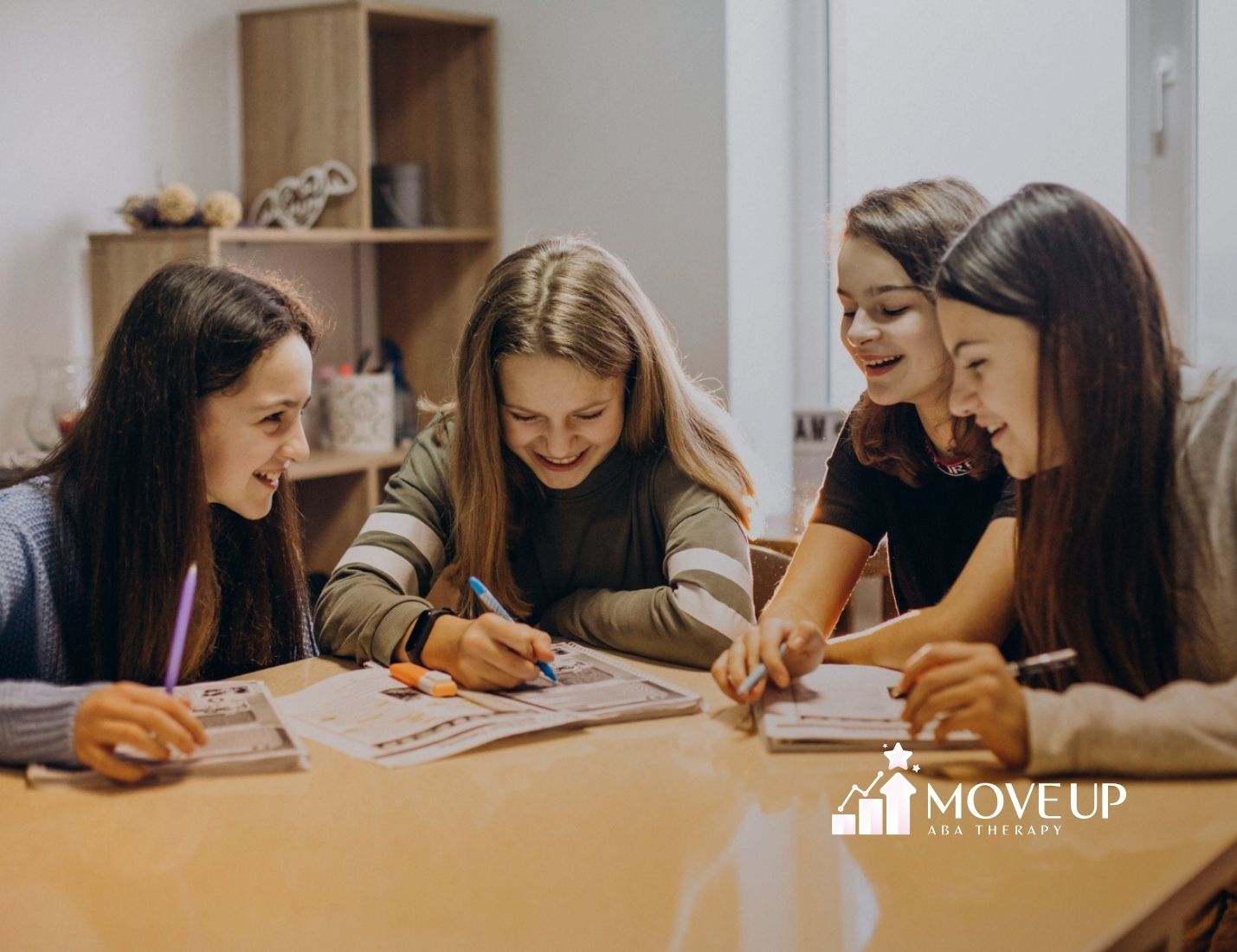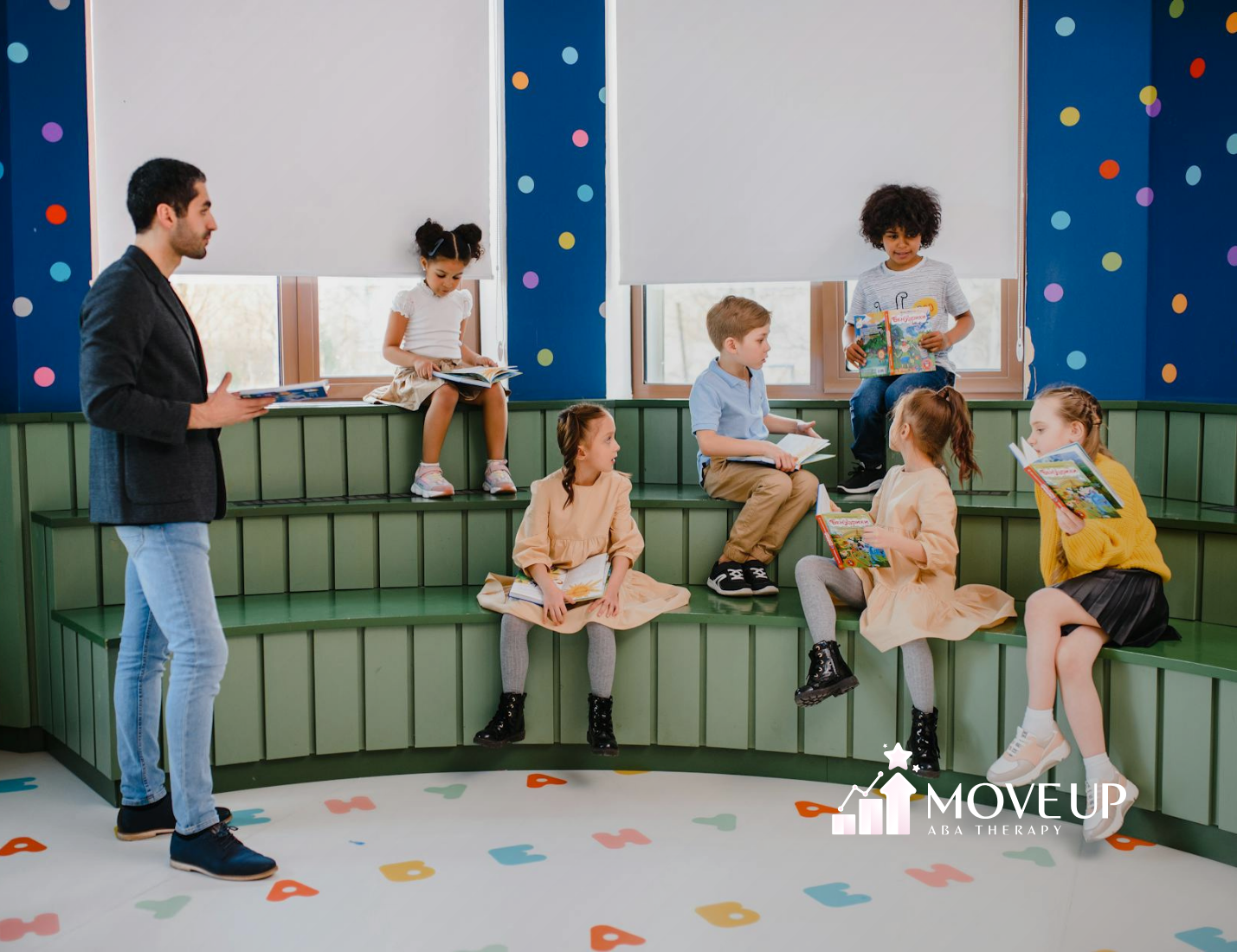ABA therapy isn’t just for young children—it’s a powerful tool for teenagers too. From managing emotions to building vocational skills, these evidence-based strategies help teens become more independent and connected to the world around them.
I once worked with David (fictitious name used), a teen who had difficulty completing homework. Using task analysis and a simple homework checklist, we broke the assignments into steps. Before long, David was finishing his work on time—and even started helping his little brother stay organized too.
Understanding ABA Therapy for Teens
What is ABA Therapy?
If you’re just beginning to explore ABA therapy for your teen, you might be wondering what it actually involves. Applied Behavior Analysis (ABA) therapy is a science-backed approach that helps us understand and improve behavior by teaching new skills and reducing those that might be challenging or harmful.
As an ABA therapist, I use this approach every day to create personalized plans for teens on the autism spectrum. It’s not a one-size-fits-all model—each plan is as unique as the individual. We track data, assess what’s working, and make adjustments as we go. It’s all about using positive reinforcement and strategic interventions to help teens grow and thrive.
Why ABA Therapy Matters for Teens
Teenagers with autism are often navigating a lot—school, social challenges, emotions, independence. ABA therapy plays a powerful role in supporting them through this stage of life. Here’s why I recommend it:
- Skill Development: From communication to self-care, we teach real-life skills teens need every day.
- Behavioral Improvement: We work on reducing disruptive behaviors and teaching socially appropriate alternatives.
- Increased Independence: As skills improve, so does autonomy. Teens gain more control over their own lives.
- Support for Families: Caregivers don’t have to do this alone. We offer strategies, resources, and emotional support.
- Transition Preparation: Whether it’s job readiness or independent living, we help teens prepare for adult life.
I’ve seen firsthand how impactful ABA therapy can be. One of my clients, a 15-year-old named Marcus, used to have daily meltdowns due to communication frustrations. After implementing a consistent plan focused on functional communication and self-regulation, not only did those behaviors decrease significantly, but his confidence skyrocketed. That’s the power of targeted, consistent support.
Key ABA Therapy Strategies for Teens
Let’s dive into some of the most effective techniques I use in sessions—and how you can support your teen at home using these same strategies.
Positive Reinforcement
This is one of the foundations of ABA. When a teen engages in a desired behavior—like asking for help instead of shutting down—we provide a reward that’s meaningful to them. This increases the chances they’ll repeat the behavior.
It’s important to find what truly motivates your teen. Maybe it’s a preferred snack, extra screen time, or even verbal praise. Once you find what works, use it consistently and be clear about why they’re earning the reward.
Task Analysis
Have you ever noticed your teen getting overwhelmed by multi-step tasks? That’s where task analysis comes in. We break big tasks down into smaller, manageable steps.
For example, cooking dinner might start with just learning to wash vegetables. Once that step is mastered, we build up to the next one. I’ve had great success teaching everything from laundry to budgeting this way. It builds confidence and competence one step at a time.
Prompting and Fading
Prompting helps teens learn a skill by offering a hint or cue—this could be verbal, visual, or physical. But the goal is always independence. That’s why we gradually “fade” the prompt until the teen can complete the task on their own.
One of my clients used to need hand-over-hand assistance just to start brushing his teeth. Through prompting and fading, he now does it entirely on his own. These small victories add up in big ways.
Supporting Social Skills Through ABA
Peer Interaction
Socializing doesn’t always come naturally for teens on the spectrum, but with guidance and practice, real progress is possible. We often use role-playing, social stories, and structured group activities to help teens feel more comfortable interacting with peers.
Encouraging real-world practice is key too. I often recommend joining a special interest group or a local club where they can meet like-minded peers.
Communication Skills
Whether we’re working on verbal or non-verbal communication, the goal is the same—helping teens express themselves clearly and confidently. I model appropriate tone, body language, and conversation skills. We use visual supports when needed and celebrate every step forward.
Emotional Regulation
Managing emotions is tough for many teens, and even more so for those with ASD. We work on identifying emotions, understanding what triggers them, and practicing calming strategies like deep breathing or mindfulness.
One of my students used to get so overwhelmed in crowded hallways at school. Together, we developed a routine involving deep breaths, a visual countdown, and a fidget tool. Within weeks, his stress level dropped, and he started enjoying school more.
Behavioral Management Techniques That Work
Functional Communication Training (FCT)
If a teen can’t express their needs effectively, they may act out instead. That’s where FCT comes in. We teach them how to communicate their wants and feelings in a way that works for them—whether it’s through speech, sign language, or a communication device.
This strategy has prevented so many outbursts in my sessions because it empowers teens to get their needs met without frustration.
Self-Monitoring Strategies
Helping teens become aware of their own behavior can be incredibly empowering. We use checklists, journals, or even apps to track progress. This self-awareness builds accountability and teaches them how to make their own adjustments.
Behavior Contracts
Sometimes, we formalize expectations with a behavior contract. It’s a simple written agreement that outlines goals, rewards, and consequences. It creates structure and clarity, which many teens benefit from.
I once had a teen who struggled with finishing chores. We created a contract that included specific goals and rewards. He loved the sense of control it gave him—and his completion rate shot up within days.
Academic Support with ABA Strategies
Individualized Learning Plans
Every teen learns differently. That’s why we build individualized learning plans (ILPs) that reflect each student’s strengths, challenges, and goals. These plans are developed in collaboration with families and teachers to ensure everyone’s on the same page.
Study Skills Training
Teens are often never taught how to study—so that’s what we do. We introduce skills like note-taking, time management, and test prep. It’s amazing how much of a difference these basic tools can make.
Homework Strategies
Homework can be a battlefield. I recommend strategies like creating a designated study space, using visual checklists, and breaking assignments into small chunks. These adjustments reduce stress and build consistency.
Transition Planning: Getting Ready for Adulthood
Vocational Skills Training
We prepare teens for future employment by teaching resume writing, job applications, interview skills, and appropriate workplace behavior. I love seeing a teen’s face light up after nailing a mock interview—they begin to see what’s possible.
Independent Living Skills
From personal hygiene to budgeting, we teach skills that support independence. These are taught step-by-step, just like we’d do for brushing teeth or meal prep.
Community Integration
Helping teens feel connected to their community is a big part of what we do. We support them in learning public transportation, attending events, or even volunteering.
Supporting teens with autism through ABA therapy isn’t just about correcting behavior—it’s about empowering them to thrive in every area of life. Whether it’s social skills, academics, or life planning, I’ve seen how effective these strategies can be when applied with consistency, care, and creativity.
If you’re looking for compassionate, expert ABA therapy services for your teen in Maryland, Move Up ABA is here to help. Reach out to us at info@moveupaba.com or give us a call at (410) 497-8865 to get started.
FAQs
What are some effective ABA therapy strategies for teenagers?
Some common strategies include positive reinforcement, task analysis, prompting and fading, functional communication training, and behavior contracts. These methods help teens build skills and independence.
How can ABA therapy help teens with autism in school and social situations?
ABA therapy supports teens by enhancing study skills, improving communication, teaching emotional regulation, and encouraging peer interactions—leading to better academic and social outcomes.
Is ABA therapy for teens different from therapy for younger children?
Yes, ABA therapy for teens often focuses more on real-world skills like job readiness, independent living, and social-emotional development, adapting strategies to meet age-appropriate goals.
Sources:
- https://pmc.ncbi.nlm.nih.gov/articles/PMC7265021/
- https://pmc.ncbi.nlm.nih.gov/articles/PMC2846575/
- https://www.appliedbehavioranalysisedu.org/how-is-functional-communication-training-used-in-applied-behavior-analysis/
- https://www.lausd.org/cms/lib/CA01000043/Centricity/domain/361/positive%20behavior/tier%20ii/t2%20resources/The%205%20Ws%20of%20Behavior%20Contracting.pdf
- https://www.autismspeaks.org/applied-behavior-analysis







